How to Backup Windows 10 with [1] Qiling Backup and [2] File History
When people search how to backup Windows 10, they approximately want to find a tool or method that can help create a full backup image of the operating system, system configurations, applications, personal data files, a specific hard drive, or its partitions/volumes. The significance of having a computer backup is too obvious to emphasize twice: without a prior backup, how to protect your Windows against hardware failure, apps or upgrade problems, malware attacks that can corrupt your files and damage your Windows 10 installation?
There are many backup solutions available for Windows users to choose from. Here, what really matters is to find a way you're accustomed to, and make sure that the backup is always valid to be restored after a disaster. Windows has a legacy built-in File History feature (Previously known as Backup and Restore in Windows 7) for creating backups of pre-set folders. If you're asking for a more comprehensive backup solution in Windows 10, regarding the smart backup, compressed backup image, cloud backup, and other backup abilities that facilitate the backup routine for every hour in every day, you should spend a minute coming to know some third-party backup and recovery plans. Here, Qiling Backup is what we're going to introduce to you.
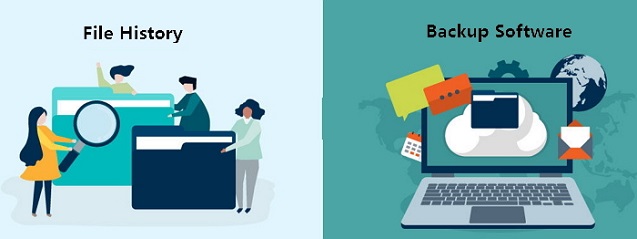
[1] Qiling Backup: How to Backup Windows 10 Fully, Smartly and Safely
PAGE CONTENT:
Qiling software company is consisted of a big family of many star products regarding data recovery, data backup and disk/partition management, to name a few. Many authoritative websites like Techradar and PCWorld comment Qiling Backup as the greatest way to ensure that your sensitive data is protected.
Product Overview - Price, Operation and Performance
Regular computer backup should be simple operations, but a powerful program like Qiling Backup will make the backup even easier. The reason we put third-party Windows backup program before the native Windows File History includes three uncomparable parts: No cost, ease of use, and uniqueness.
No cost:
Qiling Backup Free is open to all the home and office users who have a basic backup demand of OS, data, files and hard drive/partitions. Though commercial editions are there too, which provides advanced users with a wide range of extra capabilities like disk cloning, system migration, system restore to dissimilar hardware, Outlook/Exchange backup and more, the free edition can solve the 99% case of backup requests except for emails.
Ease of use
It's all too easy for starters to cope with Qiling backup application on their Windows 10 PC. The home menu on the left pane displays clearly the backup options of disk/partition, system, file and email. On the home interface in the middle, at the same time, present users what people back up the most on their computer, including OS, files and emails. Hence, clean navigation is the first impression the program leaves to its users when they open Qiling Backup on computers.
After selecting any backup plan to begin, you'll be guided with a very intuitively designed wizard with simple steps, generally choosing a backup location and modifying some advanced backup options should be done.
Uniqueness
To put it simply, general third-party programs can do all the things completed by native tools, and additionally be developed with auxiliary functions. What Qiling Backup differs itself from the File History is that it can backup more items including but not limited to files & folders, and enhanced backup options to compress a backup image, set a scheduled backup task, encrypt a sensitive backup and so on.
Advantages and Disadvantages - What Qiling Backup Does Good and Bad
In conclusion, regardless of the paid features that definitely attract users' eyes and give the confidence to take care of crucial data in Windows 10, the free open backup functions have already covered all sides of the backup needs for Windows 10. You can take a quick glimpse of what the Qiling backup program can do and cannot do at the moment.
The Good:
1. User-friendly interface and backup operation
2. 24x7 in-house technical support
3. Cost-free for 99% backup options
4. Recovery from any backup is also free
5. Able to backup without booting into Windows 10
6. Advanced options with a wide range of management plans to minimize the backup image size and security
If we have to list some bad parts of the Qiling backup tool, there is still a 1% feature that asks for an upgrade.
The Bad:
Outlook email backup is available to only paid customers
How to Guide: Simple Steps to Backup Windows 10 on Your Computer
Step 1. Download and launch Qiling Backup.
Step 2. On the "Backup and recovery" page, click "System backup" to back up Windows 10.

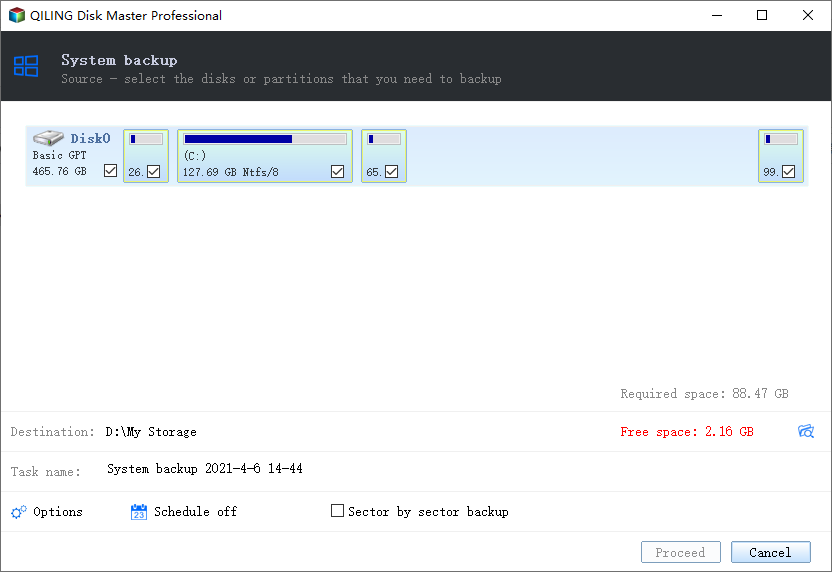
Step 3. Select the backup destination, the software will choose the most suitable location by default.
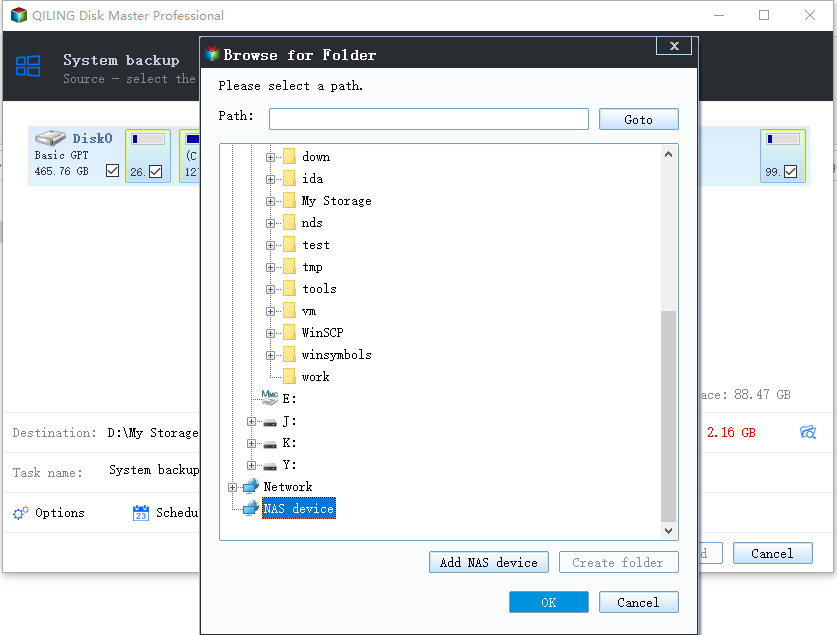
Step 4. Click "Schedule" option to open the Backup Scheme window, here you can create a scheduled backup plan to backup Windows 10 later, daily, weekly, monthly or upon an event. Then, your Windows 10 will be automatically backed up.
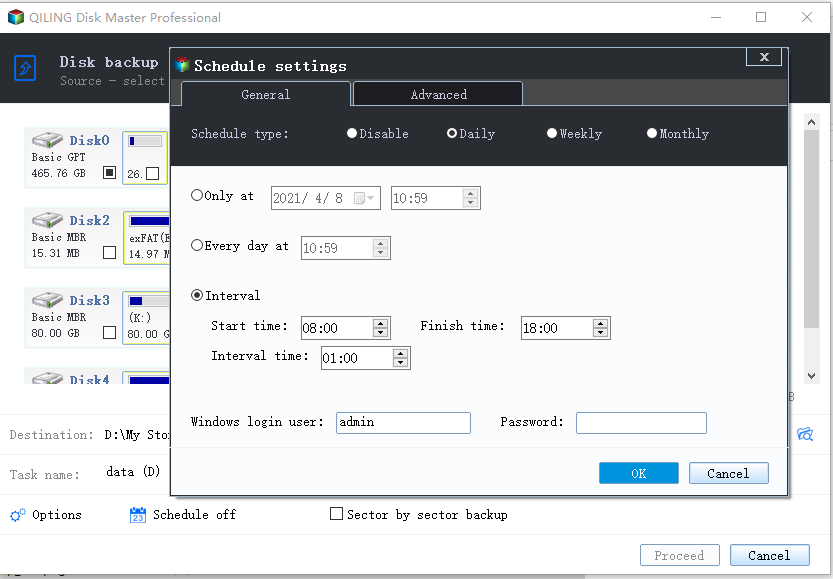
Step 5. Save all of the changes. Click "Proceed" to start Windows 10 system backup.
[2] Windows File History: A Complete Guide to Backup Specific Files/Folders
Windows 10 File History can only let you backup files or folders to an external hard drive or network location, so prepare a drive in advance and then follow the below guide to backup your Windows 10 PC with the built-in backup program.
Step 1. Select Start > Settings > Update & Security > Backup > Add a drive , and then choose an external drive or network location for your backups.
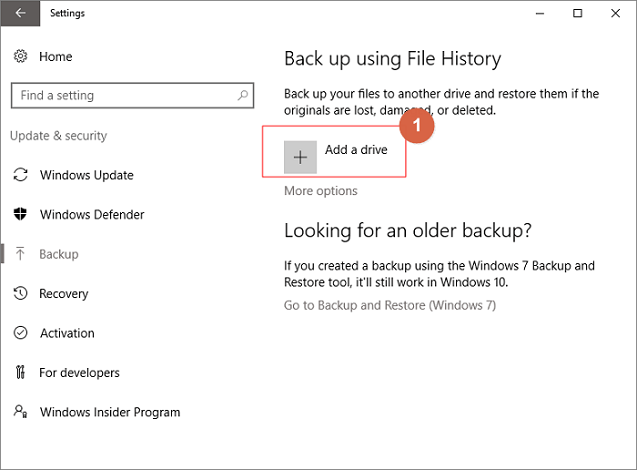
Step 2. After choosing a drive, the Automatically back up my files option will be enabled, and then please select More Options to set up the cycle time and folder of backup settings.
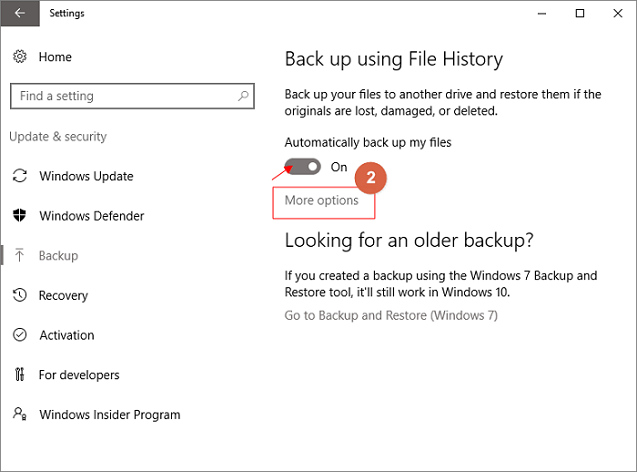
Step 3. Choose the cycle time of how often you want to back up your files once, and the period of how long you want to keep your files.
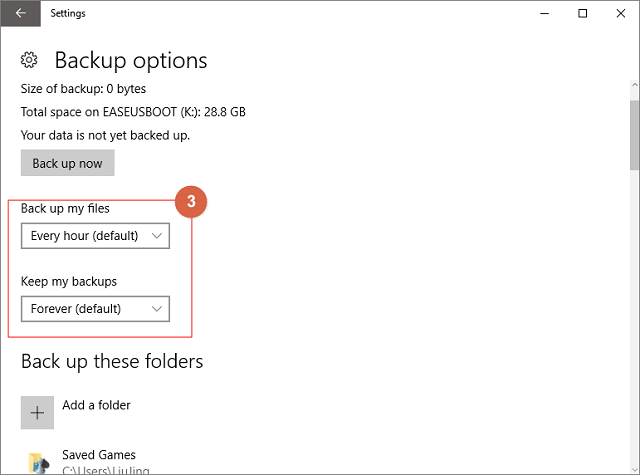
Step 4. The following will list which folders are backed up, and you also can select Add a folder to add the folders you want to back up.
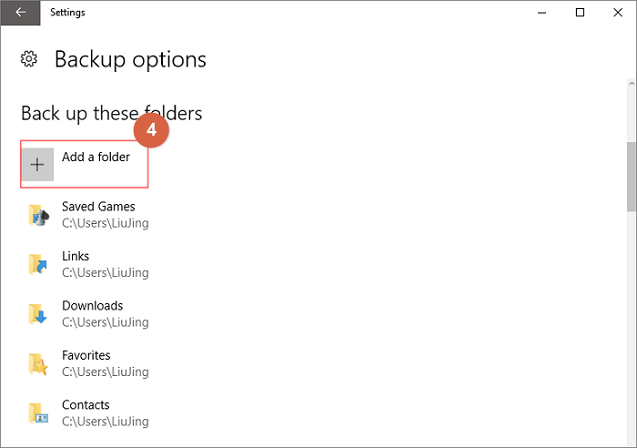
Step 5. At the same time, you can exclude some folders you don't want to backup. Click "Add a folder" under the option "Exclude these folders".
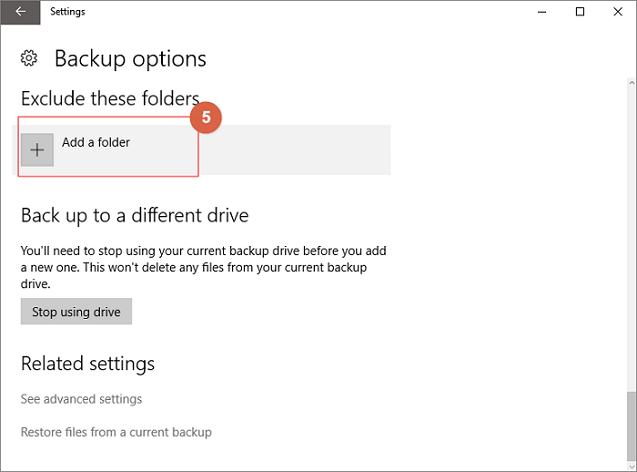
Step 6. After the setup is completed, please select Back up now.
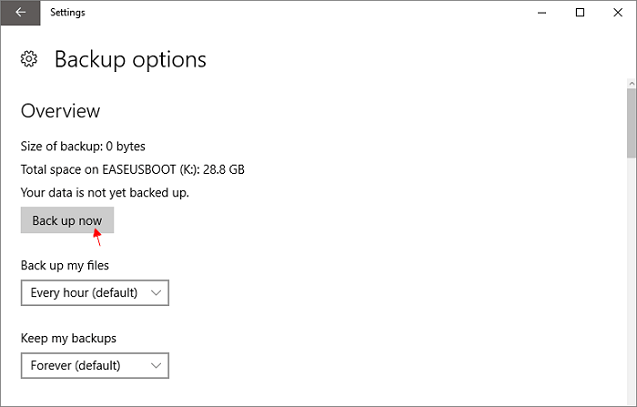
Step 7. If you want to change to a different backup drive, you need to stop using your current backup drive first. Please select Stop using drive, then you will be able to choose another drive to back up your file.
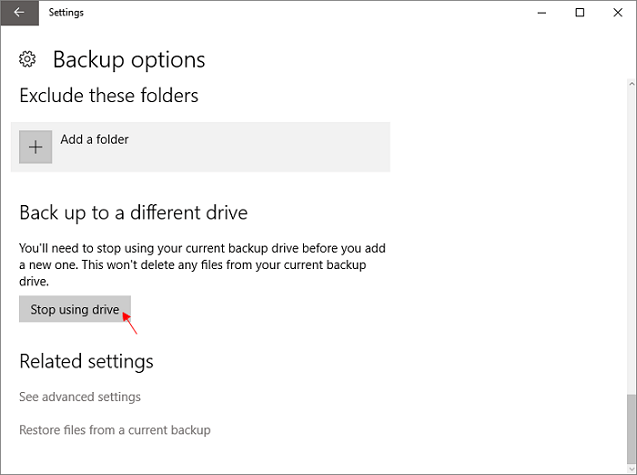
Related Articles
- ISO to USB: How to Burn ISO to USB in Windows 10
- Clone Multiple Partitions to HDD/SSD
- How to Copy OS from Laptop to USB Pen Drive
- Bootable USB Drive Not Showing Up or Recognized in Windows 10/8/7
- How to Use System Restore in Windows 10